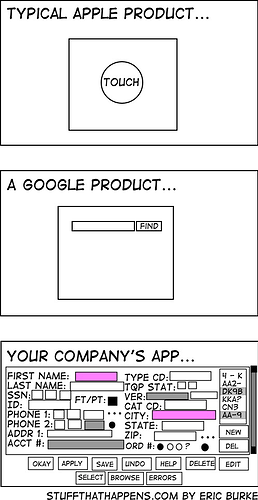That’s actually the trend that I see with web app development both in ReactJS and Angular2, but as you said AngularJS 1.0 already had this. The main diff between AngularJS 1.0 and ReactJS is all the manipulation happens on a virtual DOM in ReactJS whereas AngularJS happens on the real DOM. In the end it’s a visual speed increase on ReactJS land.
However, I actually never liked this feature. Ya it’s understandable what does what when you’re looking at it from an application developer point of view. However, once you leave who maintains those components, are they well documented enough that someone else can take over?
JQuery/HTML/Bootstrap/Material etc. are pretty well documented for designers to use at least in comparison to even AngularJS. For me it’s likely cheaper to get a template like SmartAdmin and work from there and build a prototype no data app to show screen flow. They have a beta version of ReactJS, but they have an AngularJS 1.x version.
At the very least if it was just HTML even if it was a bunch of copy and paste code, you can look and tell where to change it as long as the directive didn’t manipulate the DOM to the n-th degree. So I actually prefer to just decorate my HTML with a few limited (but well documented attributes) because it’s less explanations I have to do for the designer.
If I did write everything into components, and there’s a specific component tree structure, and there’s effects in between those components, I need to explain/document how those all work to the next guy.
As far as documentation goes, ReactJS is pretty well documented on its own, but as it is just primarily a view layer, it’s not enough as an application framework, you’d need one of many possible routers for ReactJS; mind you AngularJS comes with a very piss poor router implementation, but works for the common single view switch case, at least AngularJS have a relatively well documented UI-Router project as well.
Flux for two way binding, which AngularJS already provides. However, with angular-meteor we get 3-way binding, and I just loved it at that point.
CSS Animations are also built in with AngularJS, though because of React’s Virtual DOM they can theoretically get good enough speeds without it even on mobile.
